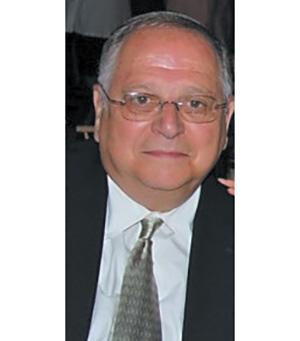
The question is not if we should talk to students about hate, but how to do it. There is some peripheral discussion about anti-Semitism around Yom HaShoah and Yom Hazikaron, but this is too general to have any substance. There once was a time when students were actually required to read newspapers and report on current events. I suspect however that with cramped schedules and the ubiquitous reliance on cell phone apps this may not be the case any longer. I am equally doubtful that today’s students watch news programs on television. However, social media does provide a highly visible platform when Jews are attacked.
Aside from knowing what is going on in the world in general and even in Israel, our students need to be mindful of the hatred that exists throughout the world and its impact not only on Jews but on all minorities. Xenophobia is a cancer of major proportions. We hear every day about attacks, killings, bombings, suicide terrorism, shootings, beatings, stabbings and even vehicular homicide. At the same time there are rallies, protests, picketing, hate ads and other activities prejudiciously aimed at “the other” in society. We as Jews are not the only targeted subgroup and there should be resistance to all forms of hatred. But anti-Semitism, or its close cousin anti-Zionism, is my primary concern here. Our middle school and high school students need to be prepared for what they will encounter when they leave the cocoon of the day school.
The ADL does a great job preparing materials for teachers to address racism and other forms of intolerance. These are very sensitive issues that cannot be approached without serious preparation. Many teachers (limudei kodesh as well as general studies) may feel obligated to talk with students about these important societal issues. But there is also hesitancy and potential danger. However, these events should not be glossed over or ignored despite the emotional impact and possible repercussions.
The National Council for the Social Studies issued the following statement after Charlottesville: “We encourage all social studies teachers and teacher educators to equip our children and students with the tools to eradicate hate, fear and violence in our democratic society.” We can assuredly make a kal ve’homer after the recent bi-coastal attacks on Jews in synagogues. Denouncing violence is not sufficient. We must provide the tools to deal with it. Classrooms can no longer be apolitical. Existing biases must be examined, even if it is uncomfortable to do so.
The American Federation of Teachers sponsored a webinar, “When Hate Is in the Headlines: Resources for K-12 Educators,” attended by more than 4,000 people, both live and on demand. [https://sharemylesson.com/teaching-resource/when-hate-headlines-resources-k-12-educators-288511]
Teachers need to know how to proficiently direct these uneasy discussions with students at different ages. There are multiple issues as well as student psyches, school philosophy and family values to take into consideration.
Each day we read about a steady stream of hate-inspired incidents taking place around the country and the world, in schools and on college campuses. These occurrences include physical attacks; racial and religious slurs; cemetery desecrations; hung nooses; swastikas and other racist, anti-Semitic and homophobic graffiti; Confederate flags; white supremacist propaganda; vandalism; and threats.
Utilizing children’s and young adult literature is a potent tool to introduce issues of identity, race, racism, culture, civil and religious rights. [https://www.adl.org/education-and-resources/resources-for-educators-parents-families/childrens-literature] Currents events are great conversation starters to talk about what’s happening in the world and help students understand news events in the context of bias, discrimination and social justice. Young people may already know about these topics through their social media feeds, but they are not necessarily analyzing them with the rigor and critical thinking that classroom instruction can bring.
Helping young people grapple with the most important issues in our world today can be scary, but it can be incredibly fulfilling and transformative. Our rabbis give us multiple insights into these issues when they discuss Pharoah, Amon and Moav, Amalek, Haman and many other Biblical enemies of the Jewish people. Unfortunately not much has changed attitudinally. There are also many movies that tackle these issues as well and can serve as a springboard for discussion and analysis. Our children are bombarded by their media connectors and deserve to know how to understand and how to handle these topics. Indeed, “education is the most powerful weapon which you can use to change the world” (Nelson Mandela).
* This article was inspired by a blog written by Jinnie Spiegler, director of curriculum at the Anti-Defamation League.
Rabbi Dr. Wallace Greene has had a distinguished career as a Jewish educator, administrator and day school consultant.








